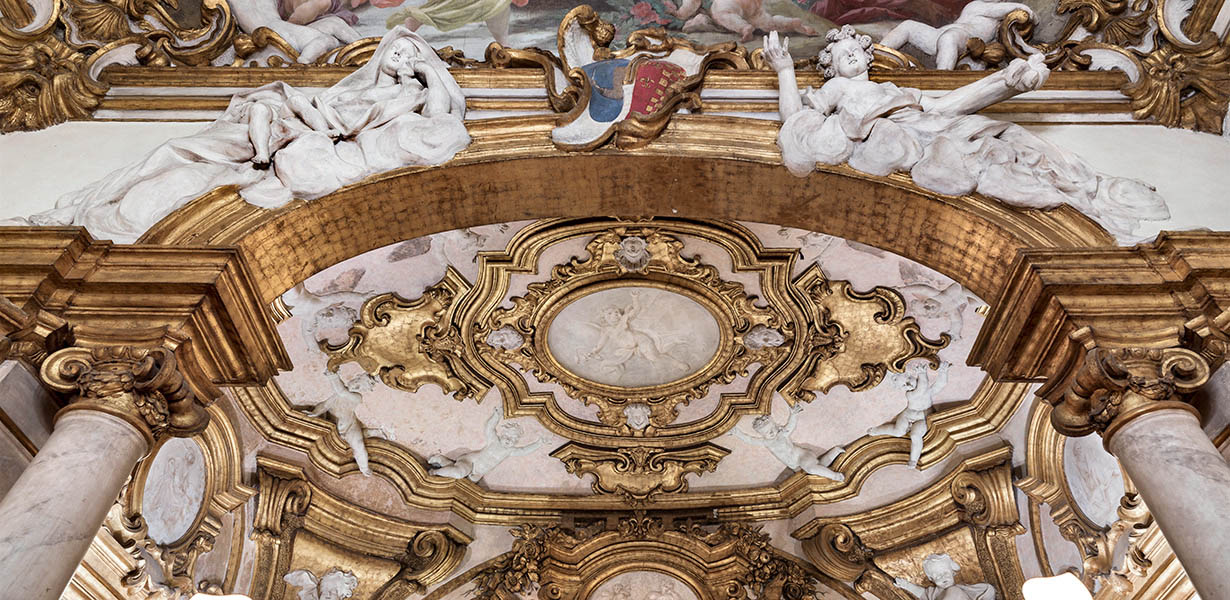Salvatore Ferragamo was born in 1898 in Bonito, near Naples, Italy, the eleventh of 14 children. After making his first pair of shoes at age nine for his sisters to wear on their confirmation, young Salvatore decided that he had found his calling. He always had a passion for shoes. After studying shoemaking in Naples for a year, Ferragamo opened a small store based in his parent’s home. In 1914, he immigrated to Boston, where one of his brothers worked in a cowboy boot factory. The Boston area was then the leather capital of the New World. After a week at the factory, Salvatore was disgusted by the conditions. Trained in the art of handcrafting leather, he later wrote, “This was not shoemaking. This was an inferno, a bedlam of rattles and clatters and whizzing machines and hurrying, scurrying people.”
The plight of factory conditions would lead Salvatore Ferragamo to head west, joining other siblings who had settled in Santa Barbara, California. One of his brothers was a tailor for the American Film Company and suggested that the studio might need a shoemaker’s skills. The idea proved ingenious and soon Salvatore was carving leather for cowboy boots for Douglas Fairbanks and fitting delicate pumps for Mary Pickford. By the 1920s, he moved to Los Angeles, where he received his largest commission, designing the shoe wardrobe for Cecil B. DeMille’s mammoth production, The Ten Commandments. He then set off on designing his own shoes for Hollywood stars and would soon become one of the leading purveyors of luxury goods in the world. However, his thriving reputation as ‘Shoemaker to the Stars’ only partially satisfied him. He could not fathom why his shoes pleased the eye yet hurt the foot, so he proceeded to study anatomy at the University of Southern California. He solved the problem of the distribution of the body’s weight on the arch of the foot and patented an internal steel support, the ‘shank.’ This support allowed the shoes to become lighter but resistant. A series of further studies led him to discover an original system, which allowed him to approach mass production without losing the quality of made-to-measure.
In 1927, Salvatore Ferragamo returned to Italy permanently to perfect and grow his business. Unable to meet the increasing demand for his coveted handmade shoes, he needed the help of skilled craftsmen in Florence, which has always been renowned as a city of incredible artisans, specializing in crafting leathers.
Ferragamo began developing shoes based on a variety of other materials, such as felt, metallic threads and raffia. These materials inspired him to create new and innovative designs, while his popularity soared in Italy. A major success came with Ferragamo’s inspired use of cork to create the so-called “wedge” heel. This became the company’s best seller for years. The years following the end of World War II marked the period of Salvatore Ferragamo’s greatest personal success, as his shoe designs became known throughout the world. In 1947, he released the so-called “invisible” sandal. That design received the prestigious Neiman Marcus Award, marking the first time this honor went to a footwear designer. The Vara model has become one of the iconic of all designs by the House of Ferragamo. Created by Ferragamo’s daughter Fiamma Di San Giuliano Ferragamo in 1967, it features the now familiar signature bow in a mid-heel design ladies shoe.
Today, Salvatore Ferragamo symbolizes the immigrants’ dream of American opportunity – one that propelled a cordwainer, who once pounded leather in a tiny stone room in southern Italy, to establish an internationally recognized luxury brand.
Situated in Florence at the Palazzo Spini Feroni, Via Tornabuoni n. 2, the museum was opened to the public in 1995 by the Ferragamo family, in an effort to illustrate Ferragamo’s artistic qualities and the important role he played in the history of shoe design and international fashion.
Besides photographs, patents, sketches, books, magazines and wooden casts of various famous feet, the museum boasts a collection of 10,000 models designed by Ferragamo from the end of the 1920s until 1960, the year of his death. The shoes, displayed on a biennial rotation, are chosen according to specific themes that deal with new issues and allow for new fields of inquiry. The shoes, all works of refined craftsmanship, are designs that unveil the mind of an artist who was always in touch with the cultural mood of the time. Salvatore often searched for and found ideas, inspiration and collaboration from the leading artists of his day. Similarly, the museum arranges exhibitions of its own historical collection with the participation of contemporary artists and promotes and hosts exhibitions and events linked to art and culture.
The museum is located in the Palazzo Spini Feroni, a medieval palace, built by Geri Spini, a wealthy merchant and banker to Pope Boniface VIII, in 1289. Over the centuries it changed hands several times, from the Spinis to the Guasconis and then to the Bagnano and Feroni families. In 1846, the palazzo was acquired by the City of Florence and from 1860 to 1870 when Florence was the capital of Italy, it was the seat of the City Council. In 1881, it was sold to the Cassa di Risparmio and came under private ownership when Salvatore Ferragamo purchased it in 1938 as the headquarters of the company and his own workshop. The building was restored in 2000 and now proudly shows its masterpieces of 17th and 18th century Florentine art, including frescoes by Bernardino Poccetti in the chapel.





